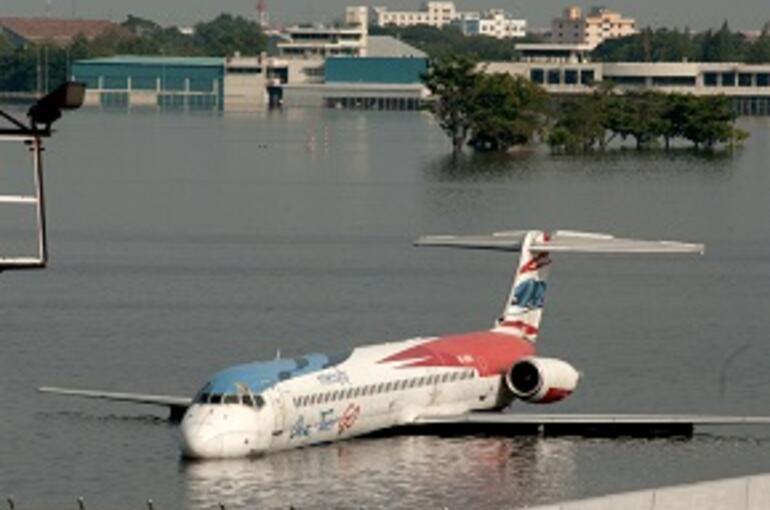- FR
- EN

The increasing sophistication of supply chains is making them more complicated to understand and master. The insurance industry is constantly improving in finding the best tools and transfer solutions to manage the risks, says François Houssais, Global Head of Property for Business Solutions at SCOR Global P&C.
Supply chains, i.e., logistics and information exchange systems, are a strategic part of many industries and are now globally organized to meet wide-ranging demands, from small ventures to mass consumption. The consequence of supply chain growth is that it has been transformed from a localized material risk into an intangible, purely financial exposure.
Supply Chain has undergone numerous notable developments, particularly in recent years:
- Increased rigidity of the Chain, due to regulatory constraints.
- Increased frequency of shocks, especially by external factors, whether natural or not: political violence, strikes, nationalizations, war and expropriation, in addition to floods, hurricanes or volcanic eruptions.
- Increased complexity of Chain, turning a chain into a multi-dimensional web: outsourcing of orders by "Cloud", just-in-time logistics, or, more recently, management by algorithms using artificial intelligence.
From static vision to dynamic management
The trends are not consistent across industries, and the challenge is to imagine the evolutions of the different models in the years to come, which pose the following questions:
- Will the Supply Chain in the automotive world be more rigid with the implementation of new regulations?
- Will the food industry chain be more limited and localized to accommodate the growing requests for short food circuits?
- Will the revolution in 3D printing allow a customer to limit the use of contractors?
- Will traceability be more accurate with Blockchain technology?
All of these changes will take place in the medium to long term. While logistic flows will ultimately be easier to trace and control, the current difficulty will be to control them in near-real time.
Every company is responsible for understanding and controlling its own Supply Chain. This is most efficiently accomplished through risk mapping and the implementation of monitoring tools adapted to specific conditions. These enable the company to detect material and financial flows, identify strategic sites and suppliers, and highlight bottlenecks.
The floods in Bangkok (Thailand) in November 2011 caused rippling effects throughout the world
Uninsurable but partially insured
Although some elements of the Supply Chain can be perceived as uninsured or even uninsurable, they can be covered by both classic and sophisticated insurance policies through subtle extensions.
For large corporate risks, the Property Damage policy will pay for business losses incurred as a result of a covered loss occurring at a supplier or customer location. The amounts can be substantial and vary by the rank of the supplier, or whether it is named or unnamed in the policy. The impairment of access to the insured's sites, the interruption of services such as water and electricity will be covered. Terrorism policies can also respond in the same way, as well as Political Risk coverages, or extensions covering the recall costs in a traditional Liability policy. The "cyber" aspect can also be addressed within the damage program by covering losses related to the attack on a data hosting provider. However, these coverages are extensions, offering a first sub-limited risk, generally below requested needs but with a low price advantage.
Specific products have also been developed by some players in the Large Corporate Risks market over the last few years, but have not reached their expected success. These policies generally play on a “difference in conditions, difference in limit” basis and their main purpose is to cover bankruptcy and political risks with limits in the EUR100 million range. Other targeted products have also been marketed, notably for the pharmaceutical industry and the loss certification by regulatory authorities, such as the Food & Drug Administration (FDA) in the United States. These dedicated products are granted after careful study of the submission and in-depth audit of the Supply Chain, including visits to the suppliers by specialized consultants.
Structured solutions have also been developed to smooth the financial impact of losses on the balance sheet.
Monitoring accumulation risk
The main problem for the risk taker is to control a developing portfolio by dynamically monitoring its accumulation on a systemic event. This is all the more complex to comprehend as several product lines, as well as several insureds, can be impacted by the same event.
When a meaningful event occurs, it could impact product lines that are structured independently of one another: Property damage, Terrorism, Marine Transport, Civil Liability, Product Recall, Political risks.
Going forward, we expect an increase in the weight of liability lines, through the dematerialization of risks and the multiplication of intermediaries, creating a breeding ground for recourse and litigation in an increasingly stricter legislative framework. Cyber exposure is a typical example of these "new" risks to third parties.
Beyond risk transfer, there is still the possibility that an entire industry could suffer reputational damage, particularly through counterfeiting or fraud in the making of products.
Towards a holistic model and a dedicated product?
In order to develop an effective and affordable insurance product, a seamless collaboration between all parties is needed: insureds, intermediaries, insurers and reinsurers. The cornerstone of this undertaking will be to implement a complex tool to monitor aggregations, turning collaborations into long-term partnerships.
The holistic modeling of the Supply Chain is in very early stages, not unlike earthquake monitoring capacities in sensitive areas a few decades ago, organized at the time by so-called CRESTA zones. We were far from today's stochastic models, the use of geocoding tools, and the actuarial approaches with consistent historical databases that enabled optimization and pricing tools.
A first step could be a deterministic approach through the treatment of defined scenarios. Mapping would provide top risks to be transferred to the market – e.g., port blockage, earthquake in Mexico City, change in the Rhine's water level in Düsseldorf, failure of a tier 3 supplier at a named site, etc. – all identified, isolated and traceable, with cumulative scenarios allowing precise portfolio monitoring.
New technologies also have a role to play. Common IT platforms have been developed in certain sectors, such as aeronautics, to centralize exchanges between customers and suppliers, thus creating a collaborative and unifying tool. This could provide an overview of industrial activity exposures that, when shared with the insurance industry, would enable insurers to visualize extreme scenarios.
Over the longer term, the development of a stochastic tool could be possible based on a series of parameters such as:
- Intrinsic and extrinsic sensitivities/exposures - propensity to generate and amplify the incident
- Controlled market shares - propensity to disseminate the incident
- Alternative solutions - propensity to minimize/containment of the incident
- An incident history with loss estimates allowing calibration
Could the calculation method then be based on work done in Life Reinsurance to estimate the spread of pandemics and quantify their cost? Can we find similarities between the transmission of a virus, from a patient zero contaminating various populations on distant continents, and the impact of a disruptive event on the entire Supply Chain throughout the world? Are there fragile actors that are highly integrated in several logistics chains, favoring "contagion", or others that are "immune" and have the power to block repercussions?
In other words, could existing models be quickly adapted to develop a stochastic tool? It should be noted that this similarity could also extend to computer virus propagation modeling, which is part of the Supply Chain.
Considerable research and development work remains to be done to address Supply Chain risk holistically, which will be accomplished through the development of specialized tools. The core of this can only be achieved through close collaboration between stakeholders.
